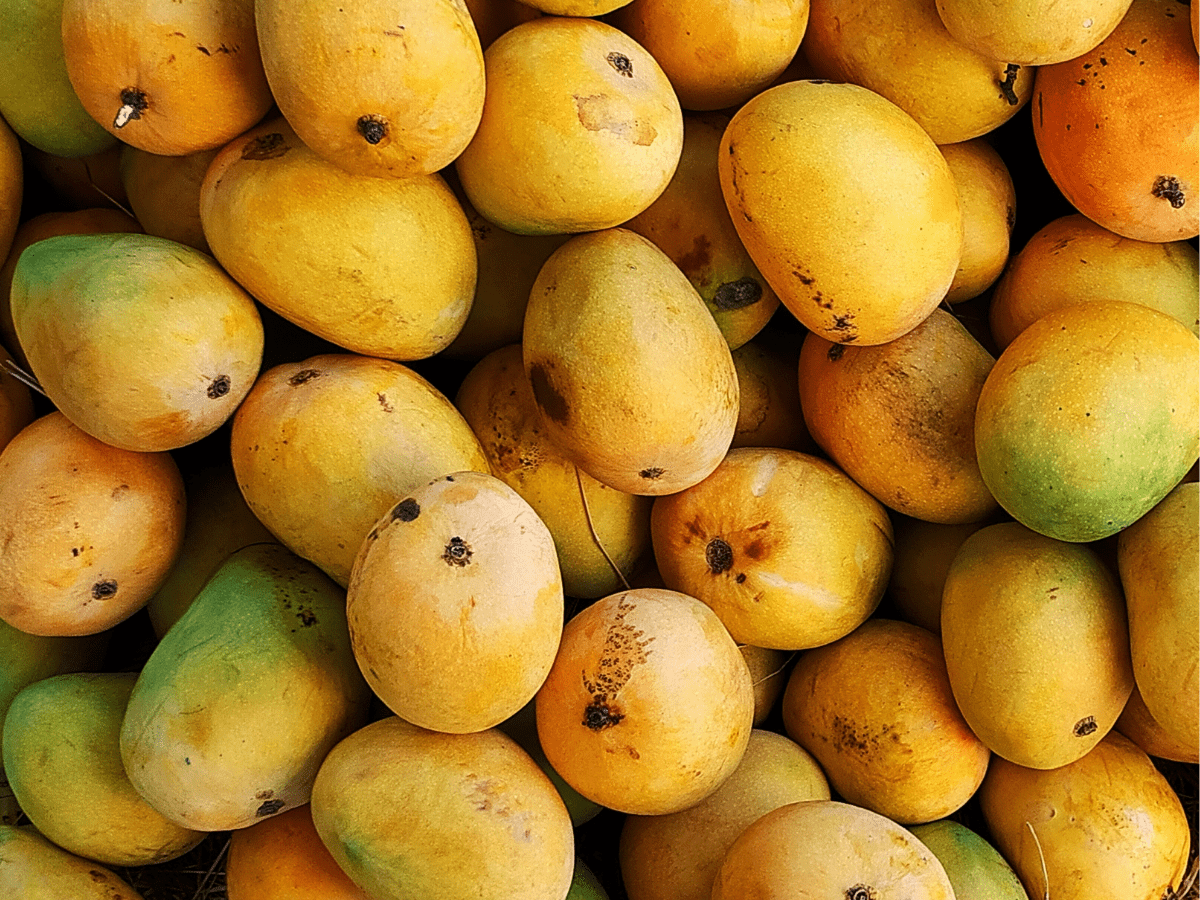
What is the national fruit of India? The answer may not be known to most people. But it would not be too difficult to guess the answer. It is none other than the King of Fruits — the mango. Mango is the national fruit of not just India but also Pakistan and the Philippines while the mango tree is the national tree of Bangladesh. This fruit is said to have first developed naturally, long before recorded history, in eastern region of the Indian subcontinent which is now Bengal, Bangladesh and Burma. It has been cultivated in India since ancient times.
In his edicts, the Mauryan emperor Ashoka who ruled between 268 BC and 232 BC, have made references to the planting of mango fruit trees along the sides of the roads. He has written that on all the important roads he ordered the plantation of mango trees so that they may provide fruit to the weary travelers when the summer season was at its peak. And at other times the trees and mango orchards would offer shade and shelter to humans and animals. It was strictly forbidden to cut down mango trees and over the course of time, the mango trees became an important part of Indian culture.
Later in Indian history, the Mughal Emperor Babur wrote his famous Baburnama, an English translation of which is available even today. In most cases Babur was not pleased with the fruits and vegetables of India which he felt did not equal the fruits of his native Ferghana valley in Uzbekistan. Only in the case of mangoes did he make an exception. He was delighted with mangoes and regretted the fact that the mango season did not last for many more months. An article in New York Times has stated that Emperor Akbar had cultivated a mango orchard in Bihar which had one lakh trees located near Darbhanga in Bihar.
The Portuguese were the first Europeans to arrive in India by sea. On 20th May, 1498, Admiral Vaso Da Gama landed in Calicut (Kozhikode). A few days after his ship landed, he tasted a mango for the first time in his life and after that he was hooked. Da Gama’s dealings with the local ruler did not go well so the ships returned to Portugal. But they carried several boxes of mangoes, along with spices and other condiments among the cargo. These were then presented to King Manuel and Queen Maria.
The Indian sub-continent produces almost 40 percent of the world’s mangoes. The variety known as Alphonso are among the most sought after varieties in the entire world. Grown mainly in Ratnagiri, these are very popular in Goa and Mumbai are named after Alphonso de Albuquerque, the Portuguese Governor of Goa from 1509 to 1515.
Other internationally popular varieties include the Carabao in the Philippines (which was listed for sometime in the Guinness Book as the sweetest mangoes in the world), Sindhri in Pakistan (along with Anwar Ratool, Chaunsa, Saroli, Samar Bahisht, Fajri, Neelam and Sunhera), Sein Ta Lone in Myanmar, Ataulfo in Mexico, Hayden (grown in Florida, USA), Julie in Jamaica and Kensington Pride in Australia.
Among the best loved varieties in India are Dussehra, Chausa, Totapuri, Himsagar, Safeda, Neelam, Kesar and Langra (which was given this unusual name because the farmer who first developed this variety was lame). Some rare varieties have imaginative names like Laila Majnu, Husn-Ara, Rashk-e-Jahan, Benazir and Deputy-Pasand (one wonders how that name came about). In Hyderabad all are familiar with Banaganapalli and Himayath varieties. Hyderabad’s beloved Banaganapalli variety is named after Banaganapalle town in Kurnool district where it was originally cultivated. It was given a GI tag on 3rd May 2017, by the Geographical Indication Registry.
There are many theories about the best ways to eat mangoes. In many places in India, mangoes are first soaked in a bucket of water before they are eaten. Interestingly, the well known singer Rihanna who belongs to Barbados in the West Indies, was seen in social media posts very recently, dipping a mango in the sea near a beach before eating it. She explained that in Barbados, it is a practice to soak mangoes in the sea before they are eaten. Perhaps this is the same thought process at work.
According to nutritionists, mangoes contain a natural molecule known as phytic acid which is found in several fruits and vegetables. So, when mangoes are soaked in water for a few hours, it helps to remove the excess phytic acid that generates heat in the body. But otherwise, like most fruits, mangoes are healthy. Raw mango is 84 percent water, 15 percent carbohydrates, 1 percent protein, and has negligible fat. For the calorie conscious, it must be noted that the energy value per 100 gm serving of a raw mango is only 60 calories.
So whether we are young or old, we can all take advantage of the mango season to indulge ourselves. If one is diabetic one should eat only limited quantities but anyone else can afford to have a daily feast on the lovely and juicy fruits.



